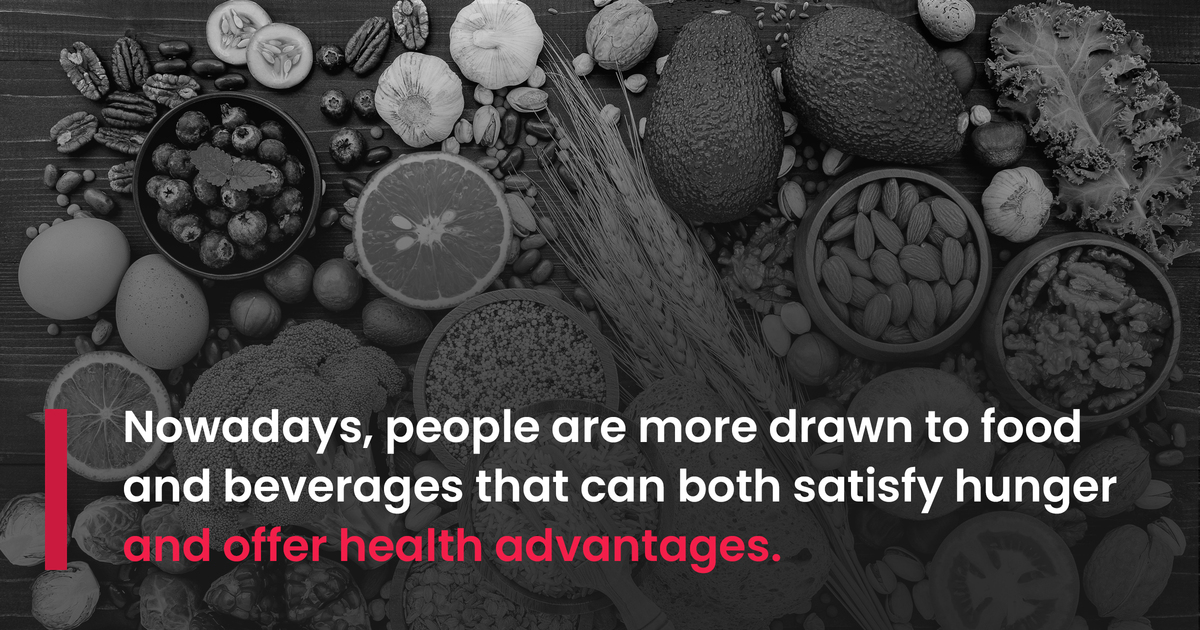The year 2024 will be one of great significance for the industrial and consumer goods sectors, as they are being reshaped by non-stop technological progress, constantly changing customer demands and a growing focus on sustainability.
For companies surfing this landscape, being aware of emerging trends is more than simply beneficial – it’s vital. With the Internet of Things, virtual and augmented reality, robotics, and other technological innovations, 2024 is most likely to be remembered as a year of revolutionary developments and trends.
We have delved into the nuances of the rapidly changing industrial and consumer goods sectors, and in this article, we reveal the critical turning points and cutting-edge technologies that are reshaping them.
Join RightAngle Global as we analyze the future, where innovation and tradition collide, and help stakeholders to make wise decisions in a time of constant change.
Which Trends to Follow in 2024 and Beyond
In 2023, the industrial and consumer goods sectors benefited from tremendous technological developments, particularly in the areas of automation and artificial intelligence (AI).
Here’s what you might expect in 2024 and beyond in the industrial sector:
Trend #1: Digital Transformation and Industry 4.0
The industrial sector is undergoing a rapid digital transition as more and more companies employ robotics, AI, the Internet of Things (IoT), virtual reality (VR), and augmented reality (AR). Smart factories are using these cutting-edge technologies to maximize efficiency, eliminate waste, and reduce human error.
 When it comes to consumer goods, VR and AR are revolutionizing the industry by enabling shoppers to visualize products in their own environments prior to making a purchase.
When it comes to consumer goods, VR and AR are revolutionizing the industry by enabling shoppers to visualize products in their own environments prior to making a purchase.
In 2024, the AR and VR market is expected to bring in US$38.6 billion in revenue and by 2028, this is predicted to hit US$58.1 billion, registering a compound annual growth rate (CAGR) of 10.77%.
Case Study:
Procter & Gamble (P&G) and Microsoft signed a multi-year agreement in the summer of 2022 to transform P&G’s digital manufacturing platform. The partners claim that by utilizing the Industrial Internet of Things (IIoT), digital twin, data, and AI, they will build the digital manufacturing of the future to increase productivity, accelerate product delivery, cut costs, and increase the level of client satisfaction.
Trend #2: 3D printing
The emergence of 3D printing has had a serious impact on conventional production techniques. According to experts, the global market for 3D printing is forecast to grow to US$51 billion by 2025.
Case Study:
Various businesses are already using 3D printing in their daily activities. For instance, General Electric “prints” complex equipment parts using this technology, which allows the company to reduce waste and streamline workflows. When creating its GE9X engine, General Electric was able to reduce the number of engine parts from over 300 to just 7 by using additive manufacturing (AM) processes (another term for 3D printing).
AM makes it possible to create custom parts with intricate geometries and minimal waste. Medical and dental implants can be produced more effectively using AM technologies.
Trend #4: Focus on Sustainability and Eco-Friendly Practices
Economic expansion, the creation of jobs, breakthroughs, and sustainability all depend heavily on the industrial sector. Sustainable development is primarily driven by ethical, social, and environmental factors rather than simply economics and competition. Furthermore, the demands for more environmentally friendly practices across businesses are coming from both customers and the authorities.
Case Study:
Danone has centered its low-carbon approach around agriculture, particularly with the application of regenerative agriculture techniques that make it possible to lower greenhouse gas emissions, which, in turn, improves soil quality and retains more carbon in the earth (carbon sequestration).
In addition, Danone is participating in forestry initiatives and plans to revitalize natural habitats. The company is seeking to prevent 20 million metric tons of carbon dioxide emissions over 20 years by implementing 12 projects in Asia, Africa, and Latin America.
Trend #5: Consumer-centric Innovation and Social Media Impact
The latest data shows that 4.95 billion people use social media globally, which represents over half of the planet’s population.
Modern consumers want products that meet their unique requirements and lifestyles, which forces businesses to come up with solutions that can fulfill those needs. This trend emphasizes how important digital platforms and social media are for obtaining consumer information and influencing product development methods.
 To leverage influencers’ relatability, companies are increasingly dedicating large amounts of their marketing budgets to social media initiatives.
To leverage influencers’ relatability, companies are increasingly dedicating large amounts of their marketing budgets to social media initiatives.
Case Study:
The collaboration team at Gymshark finds talent to publish content that highlights its goods. While surfing TikTok or Instagram, users may come across the brand’s ambassadors, known as Gymshark Athletes, who offer discount codes and showcase their most recent purchases. For instance, @SopheAllen shows off her Black Friday purchases to her subscribers and encourages them to take advantage of her affiliate link to save up to 60%. Today, the brand’s Instagram account has over 6.7 million subscribers, and its TikTok account has 5.3 million and is growing.
Trend #6: Increasing Supply Chain Resilience
Global supply chains are susceptible to disruptions caused by natural disasters, conflicts, and pandemics, as highlighted by the events that have occurred over the last few years. As a result, businesses are re-evaluating their supply chain plans and focusing on flexibility, response, and openness.
Using blockchain technology, for instance, provides a previously unattainable degree of openness and the tracking of goods from manufacture to market, thereby boosting consumer confidence and operational resilience.
Trend #7: Health-conscious Consumers
An increasing number of health-conscious consumers is driving a noticeable change in the consumer goods market toward health and wellness items. Brands must also make a strategy shift in response to the growing influence of conscientious consumers seeking locally produced, ethical, and sustainable goods.
The global wellness market is expected to be worth US$8.5 trillion by 2027, up from the previous record of US$5.6 trillion. The increasing appetite for healthy, natural, and organic products shows that consumer preferences are shifting toward a healthy lifestyle and well-being.

A corresponding change is also taking place in the animal health industry, with more and more people caring about the health of their pets. This pattern is reflected in the worldwide pet food market, the size of which was valued at US$103.3 billion in 2023 and which, by 2030, could increase at a CAGR of 4.4%.
Final word:
The near future of the industrial and consumer goods industries will be characterized by a mix of innovation, consumer engagement, and a continuous commitment to increasing sustainability. Successful businesses will be those that have the flexibility to handle various challenges, a willingness to embrace changes, and the ability to take advantage of the numerous opportunities presented by various technological developments.
Suggested reading:
Key Expert Network Trends in 2024: Insights from RightAngle Global
How Can Expert Networks Impact Your Digital Marketing Strategy?
How Expert Networks Can Help Companies Keep Up With Industry Trends
Share to

